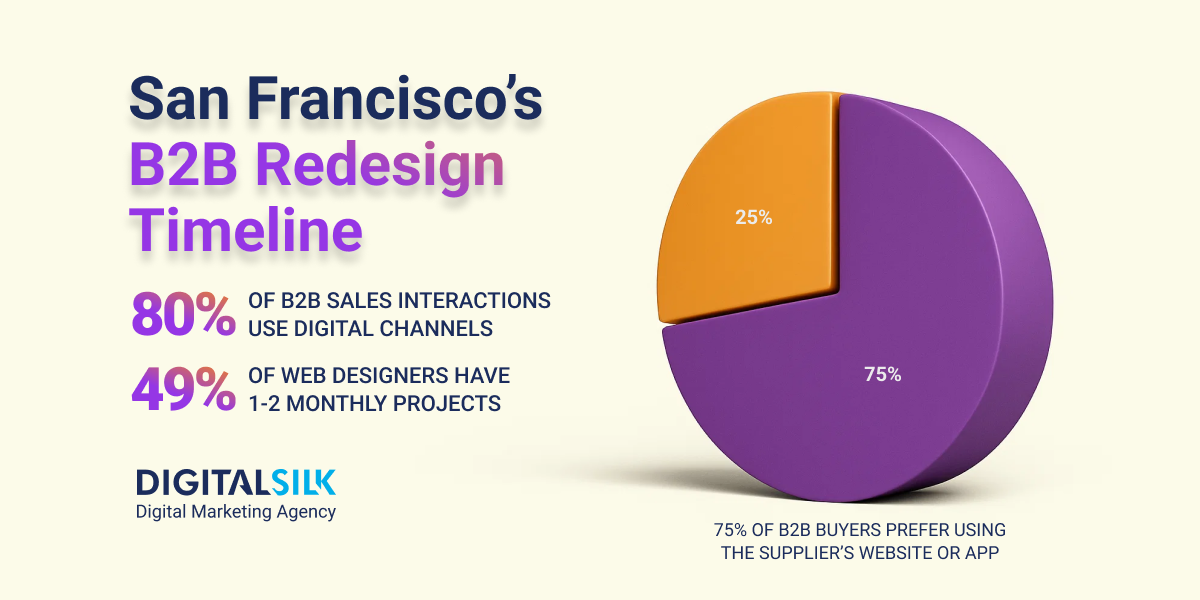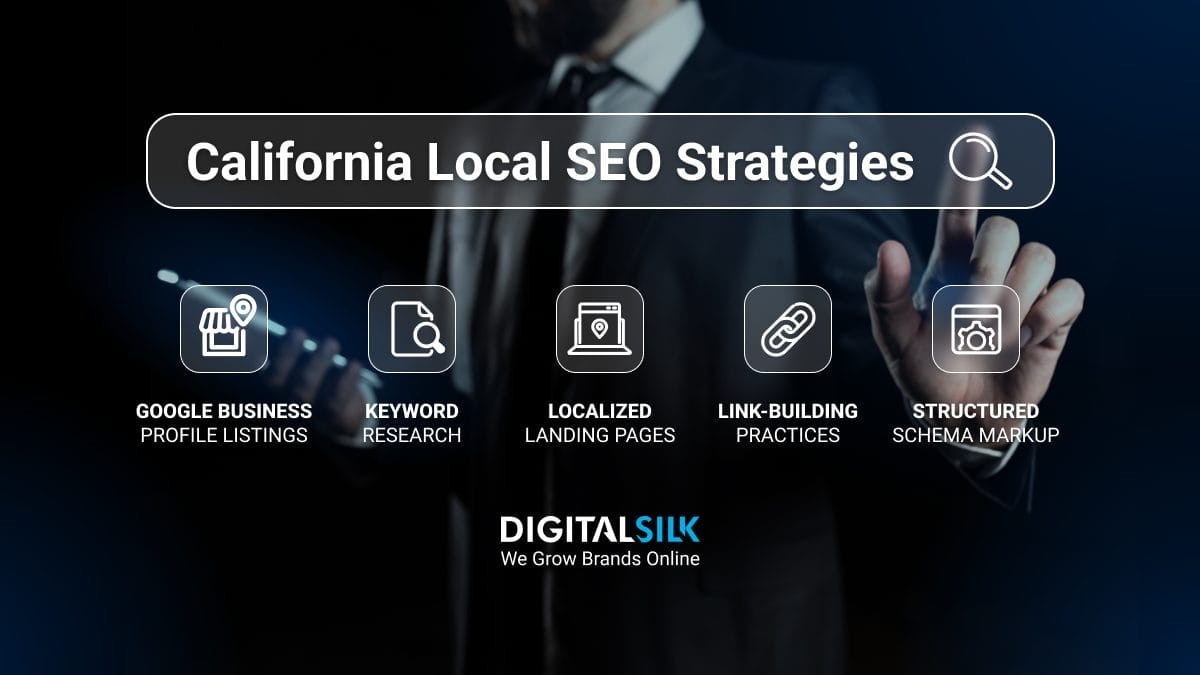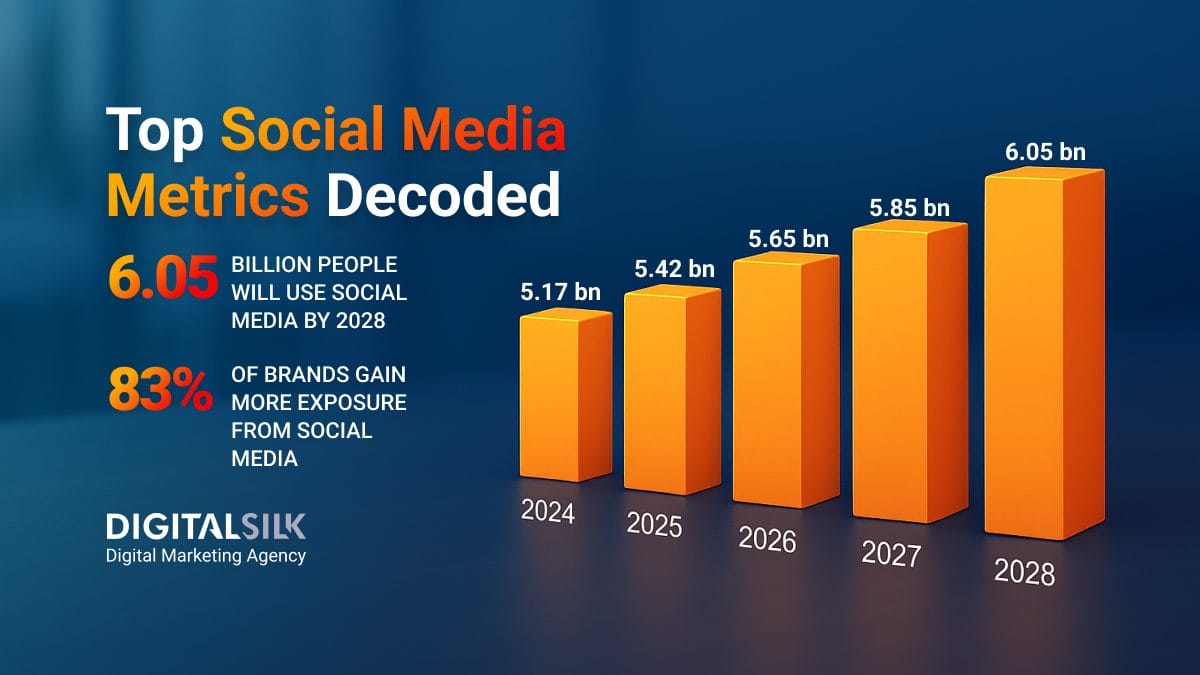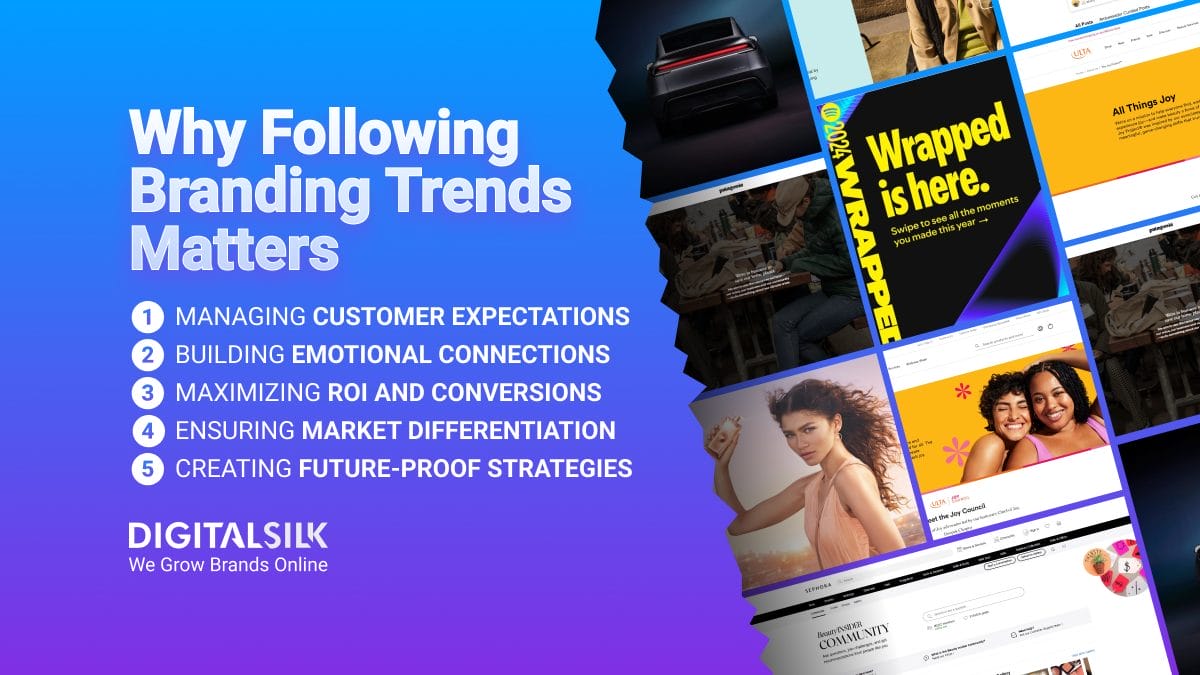B2B Website Redesign Timelines In San Francisco: Key Highlights
-
Websites take an average of 25 days to build, but project delays usually start outside the design process.
-
69% of web designers are self-employed, making availability and consistency key risks in B2B redesign timelines.
-
83% of brands use AI to enhance UX, but human review still drives final decisions and project timelines.
In San Francisco, B2B web redesigns have become high-stakes projects where timing matters as much as execution.
What starts with clear goals can get tangled fast by too many opinions, shifting priorities and decisions that drag longer than the build itself.
With 82% of B2B businesses now selling through their own websites, every delay puts revenue plans at risk and adds pressure where it hurts most.
In this post, we’ll break down B2B website redesign timelines in San Francisco and how outdated user experiences shape what customers notice, question and walk away from.
U.S. & San Francisco Web Design Industry Overview
Web design is a direct contributor to the Bay Area’s economic output, career growth opportunities and digital competitiveness.
With billions flowing into U.S. web services and San Francisco driving a sizable share of that momentum, the data reflects a region where design talent and digital ambition go hand in hand.
The stats below highlight how San Francisco’s web design sector fits into the broader U.S. market and why it continues to draw serious investment and talent.
- The U.S. web design services market experienced a steady growth of a CAGR of 2.2% over the past 5 years, reaching $43.5 billion in 2024.
- San Francisco’s $250 billion Gross Domestic Product (GDP) makes up nearly a quarter of the Bay Area’s total economic output, positioning the city as the economic hub of the nation’s fastest-growing regional economy.
- The San Francisco-Oakland-Hayward area houses 7,140 employed web and digital interface designers.
- The annual mean wage for web and digital interface designers in the San Francisco-Oakland-Hayward area is $159,770.
How This Affects San Francisco B2B Web Design Timelines
- Access high-caliber design expertise. The region’s strong concentration of experienced professionals offers exceptional talent for B2B redesigns, provided timelines account for demand.
- Use regional momentum to push for innovation. With design playing a measurable role in economic output, there’s room to take creative risks that align with business growth.
- Lean into local expertise. Designers in this market understand the expectations of digitally fluent buyers, which can lead to more effective, conversion-driven outcomes, even if timelines are longer.
B2B Website Redesign Timelines
The San Francisco web design timeline reflects more than project scope.
It tracks how teams juggle deadlines, shifting priorities and limited resources.
The data below highlights the patterns behind timeline breakdowns and what they mean for B2B projects.
- The average web designer takes around 25 days to create a website.
- On average, web designers take on 3.26 projects a month.
- 49% of web designers work on one to two projects every month.
- 69% of designers are self-employed, whereas 60% of them work alone.
- 39% of self-employed web designers say setting their own schedule for projects is their favorite part of working for themselves.
- 68% of businesses performed a website redesign in the past 12 months, but 1/3 of them were dissatisfied with the results.
- On average, large IT projects with major website builds run 46% longer than originally scheduled.
- 49% of businesses have undergone a full website redesign in the last two years.
- 40.5% of brands cite SEO concerns as their main reason for not redesigning their website.
- User experience issues account for 3 of the 12 reasons why web design projects fail.
How This Affects San Francisco B2B Web Design Timelines
- Set the foundation early to stay on track. Clear goals, timelines and responsibilities help align design requirements with business objectives.
- Prioritize thoughtful execution over speed. A well-paced build anchored in strategy and user experience delivers stronger long-term performance.
- Use redesigns to reset, not just refresh. These projects offer a rare opportunity to address structural issues in messaging, UX and conversions that often go untouched.
The Importance Of San Francisco B2B Web Design
B2B website redesign in San Francisco is shaped by how buyers expect to research, compare and complete transactions on their own terms.
Digital has become the primary channel, yet many sites still fall short of meeting modern expectations.
The B2B web design statistics below show where those gaps are and why they matter.
- 80% of B2B sales interactions happen through digital channels in 2025.
- A supplier’s website or app is the most used B2B purchase channel in the U.S, with 75%.
- 66% of B2B customers expect the same digital experience they receive on B2C websites.
- 46% of B2B buyers experience frustration when ordering products online.
- In 2025, 56% of B2B organizations’ revenue in the U.S. comes from digital channels.
- In 2024, there were 485 ADA-Compliance website lawsuits in California, a decrease from 953 in 2023.
- 54.76% of U.S. B2B companies are non-compliant with the California Consumer Privacy Act (CCPA).
How This Affects San Francisco B2B Web Design Timelines
- B2C-level expectations raise the design bar. Delivering the seamless experience B2B buyers now demand requires deeper UX strategy, more iterations and extended QA cycles.
- Compliance work can’t be an afterthought. Meeting CCPA and ADA standards adds technical and legal steps to the process, which must be scoped into the timeline from the beginning.
- Designing for revenue impact takes more time. Building a site that actively supports sales requires stronger alignment between leadership, marketing and product, which can slow timelines without upfront clarity.
The Impact Of AI On B2B Site Redesign Duration
With the number of AI and ChatGPT users increasing, B2B leaders across San Francisco are rethinking how they structure digital projects from the ground up.
Teams now use AI to generate content faster, accelerate design production and move through revisions with fewer bottlenecks.
At the same time, they face new challenges in maintaining brand consistency, ensuring quality and deciding where human input still adds the most value.
The data below shows how AI is actively reshaping B2B website redesign timelines in San Francisco and what that means for execution and accountability.
- 83% of brands use AI to enhance the user experience.
- 79% of businesses use AI to support their website.
- 52% of B2B businesses use AI to generate content, while 30% of them use it to design their website.
- 51% of U.S. B2B marketers are optimistic about the use of AI in their industry.
How This Affects San Francisco B2B Web Design Timelines
- More tools mean more integration. AI is changing workflows, but adding new platforms into existing systems adds time for onboarding, testing and stakeholder training.
- AI shifts where delays happen. While production time shortens, timelines may stretch during review, editing or QA, especially when quality or tone falls short of expectations.
- Human review is still a timeline factor. Faster outputs still require brand, legal and UX oversight, which can create new bottlenecks if teams underestimate the need for refinement.
B2B Web Design Project Phases
A successful website redesign process for B2B brands in San Francisco is built on distinct phases, each contributing to a site that drives growth, builds trust and supports measurable business outcomes.
The common phases include:
- Discovery Phase: In-depth research uncovers business goals, audience needs and current performance gaps. Early alignment helps avoid missteps later in the process.
- Planning and Information Architecture: A clear sitemap and content structure are developed to reflect how B2B buyers navigate, compare options and move toward action. This stage also defines technical requirements and key user flows.
- Design Mockups and Wireframes: Visual strategy takes shape through layouts that emphasize trust, clarity and responsiveness. Wireframes can support intuitive decision-making and highlight high-value content.
- Development and Testing: A responsive, SEO-ready site is built with performance and integration in mind. Comprehensive testing ensures functionality across browsers, devices and screen sizes.
- Launch and Optimization: The site goes live through a coordinated rollout with ongoing monitoring and post-launch support. Insights from user behavior guide continuous improvements to boost engagement and conversions.
What San Francisco B2B Brands Struggle With During Website Redesigns
San Francisco’s business climate is fast-paced, high-growth and innovation-driven, but that speed doesn’t always translate to web projects.
Some of the more common challenges that slow timelines and raise redesign risk in the Bay Area include::
- Multiple stakeholder layers: Between growth teams, product leads, marketing execs and founders, feedback loops can stretch approval cycles beyond expectations.
- Series-funded shifts: VC-backed startups often pivot mid-project, forcing brand or messaging overhauls that set timelines back.
- Technical debt: Legacy systems and complex integrations create backend roadblocks that aren’t obvious during discovery.
- Compliance pressure: Fintech, medtech and SaaS brands face additional legal reviews that delay design handoffs or development.
- Remote misalignment: Distributed teams mean slower feedback, unclear accountability and asynchronous timelines.
At Digital Silk, we proactively address these challenges by analyzing business objectives and aligning timelines with tangible outcomes from day one.
Why B2B Redesigns In San Francisco Stall & How To Avoid It
In most B2B redesigns, delays rarely come from the creative team. The real slowdown tends to happen around decisions, especially when roles shift or priorities aren’t aligned across teams.
In San Francisco, some of the more common issues include:
- Team turnover or reorganizations that reset direction mid-project
- Scope expanding to fit new product features that weren’t part of the original plan
- Legal and security reviews that appear late in the timeline
- Disconnects between marketing and product that take time to resolve
These kinds of delays aren’t unusual, but they are avoidable if they’re anticipated early.
To mitigate these risks, Digital Silk uses:
- Agile sprints with scheduled reviews that prevent bottlenecks from piling up
- Clear decision roles defined up front, so there’s no confusion about ownership
- Compliance reviews built into the timeline, not added after work is already done
Case Study: How CrawlSF Increased Returning Users By 73%
CrawlSF, a leading organizer of pub crawls and seasonal events in San Francisco, set out to reposition itself as the city’s go-to platform for discovering things to do in the area.

Challenges:
CrawlSF’s existing website was dated and difficult to navigate, especially on mobile.
Despite strong traffic from SEO, the platform struggled to convert visitors into customers.
The team also had concerns about losing search rankings during the redesign process, which had been a major source of consistent growth.
Solution:
Digital Silk led a full rebrand and site rebuild, beginning with a competitive review and positioning strategy.
From there, we developed a new logo, clarified CrawlSF’s value proposition and redesigned the website to support faster navigation, better readability and stronger mobile performance.
Technical SEO was integrated from the start to protect and improve existing visibility.
Results:
- 23% increase in overall user growth, expanding CrawlSF’s audience and market reach
- 17% increase in organic users, driven by improved content structure and SEO
- 73% increase in returning users, indicating stronger engagement and repeat interest
- 37% decrease in bounce rate, supported by faster load times and streamlined navigation
Redesign Your B2B Website With Digital Silk
B2B website redesign timelines in San Francisco are shaped by the depth of strategy, quality of execution and complexity of business needs.
With high buyer expectations and strong regional competition, rushing the process often leads to missed opportunities.
Taking the time to plan, align and execute with purpose results in a site that performs long after launch.
Digital Silk follows the latest web design trends and best practices to create B2B websites that are visually compelling, strategically structured and optimized for user engagement across every stage of the buyer journey.
As a professional web design agency, our services include:
- Web design for San Francisco brands
- Website redesign services
- UI/UX design
- Branding services
- Digital marketing
For each project, our team delivers proactive project management, transparent communication and measurable results.
Contact our team, call us at (800) 206-9413 or fill in the Request a Quote form below to schedule a consultation.
"*" indicates required fields









